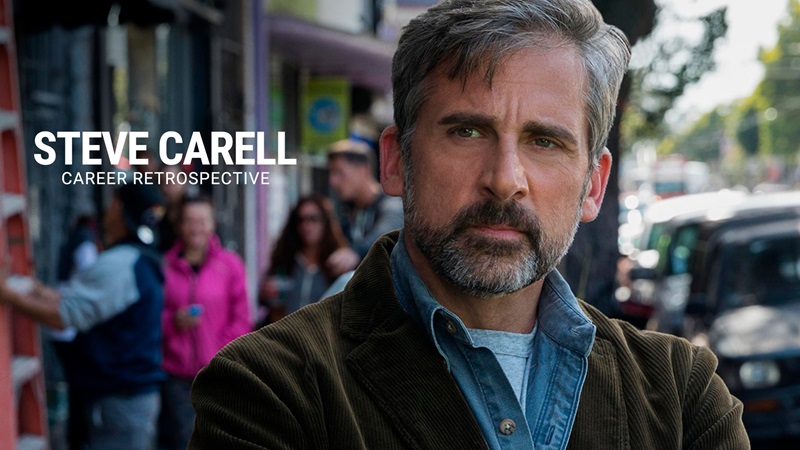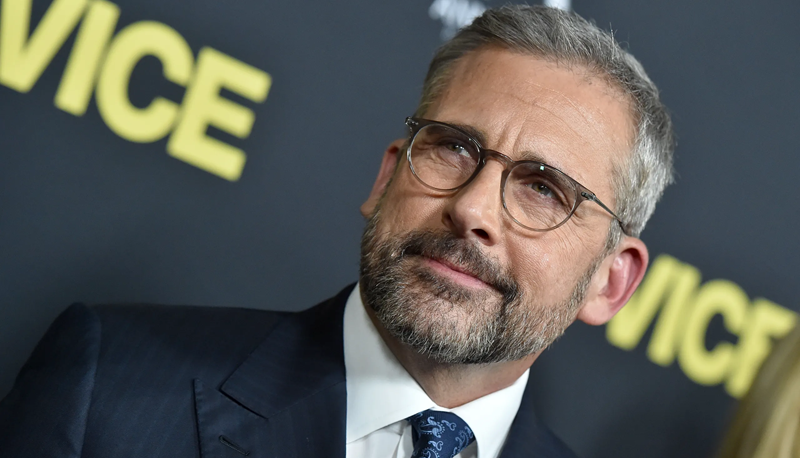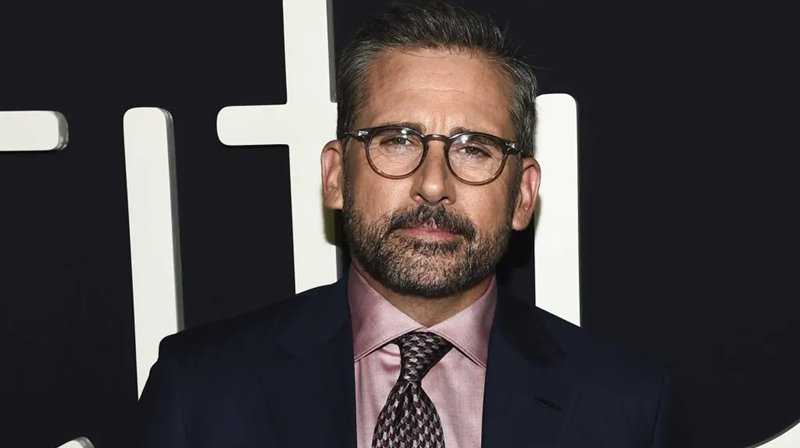Steve Carell is a renowned actor, comedian, writer, producer, and director who has made a significant mark in the entertainment industry. Born in Massachusetts, Carell’s journey in Hollywood began in the late 1980s with small roles in commercials and films. In the early 2000s, his career took a substantial leap with the hit comedy series “The Office,” where he portrayed the unforgettable character of Michael Scott.
This role not only made him a household name, but also earned him a Golden Globe Award. He transitioned effortlessly into film, delivering remarkable performances in movies such as «The 40-Year-Old Virgin,» «Crazy, Stupid, Love,» and «Little Miss Sunshine,» to name a few. Carell’s versatility as an actor is evident in his range of roles, from comedy to drama, as seen in his portrayal of John du Pont in «Foxcatcher,» which garnered him an Academy Award nomination.
Carell’s impact on the industry is considerable. His comedic timing and ability to portray complex characters have made him one of the most respected actors of his generation. He has also made significant contributions behind the camera as a writer and producer.
Carell’s work has touched millions worldwide, with his performances often providing much-needed levity and entertainment. He co-created the critically acclaimed series «Space Force» for Netflix, further demonstrating his creative prowess. Additionally, Carell has been a vocal advocate for equality in Hollywood, using his platform to promote change.
The influence of Carell goes beyond the entertainment industry. He has made a significant difference in society by using his fame to bring attention to important causes. He has been involved in numerous philanthropic activities, including supporting organizations that focus on autism research and resources. Carell’s approach to his career, his commitment to his craft, and his use of his platform for positive change make him a role model for aspiring entertainers and others alike.
Carell’s career demonstrates the power of perseverance, versatility, and creativity. His journey from a minor actor to a major Hollywood player is a testament to his skill and dedication. While he has achieved considerable success, Carell remains humble and focused on his craft. He continues to push boundaries, taking on new roles and projects that challenge him and delight audiences.
In conclusion, Steve Carell is a multi-talented artist who has made a significant impact on the entertainment industry and society. His work, both in front of and behind the camera, has brought joy to audiences around the world, while his advocacy work has contributed to positive change. Carell’s career is a shining example of the power of persistence, talent, and a commitment to making a difference. His influence will undoubtedly continue to be felt for generations to come.

Rise to Fame: Key Breakthroughs
Rise to fame often includes pivotal breakthroughs that serve as the stepping stones leading to an individual’s recognition and success. These key breakthroughs can occur in different forms and contexts, depending on the area of expertise or industry in which the individual operates. For instance, in the world of cinema, a breakthrough might be a critically acclaimed performance in a blockbuster movie that propels an actor into the spotlight.
For a scientist, it could be a revolutionary discovery or innovation that transforms their field and earns them widespread acclaim. Musicians might experience their breakthrough with a hit single or album that tops the charts and resonates with a wide audience. Entrepreneurs often gain fame through a successful startup venture that disrupts the market or introduces a unique product or service. These breakthroughs, however, are not just chance occurrences but are often the results of relentless hard work, persistence, and passion.
They are the moments when talent and preparation meet opportunity. Moreover, how these individuals handle the fame and maintain their success after their breakthrough is equally important. The journey to fame is not linear and is fraught with challenges and hardships. Yet, it is these key breakthroughs that validate the individuals’ efforts and pave the way for their rise to fame. However, it is also crucial to remember that fame is not the ultimate goal, but rather a byproduct of the individual’s contributions and achievements in their respective fields. The real recognition lies in the impact they make and the legacy they leave behind.
Iconic Roles and Signature Performances
Iconic roles and signature performances in the realm of acting and entertainment are distinguished by the unique and captivating ways that actors and actresses bring characters to life. These performances go beyond mere recitations of lines or movements; they embody a perfect fusion of talent, skill, and an intuitive understanding of the character’s nuances. The result is a masterful depiction that resonates deeply with audiences and becomes synonymous with the performer.
For instance, Robert Downey Jr.’s portrayal of Tony Stark in the Marvel Cinematic Universe is a signature performance that has become iconic. Downey Jr. seamlessly integrates his own charm, wit, and charisma into the character, transforming Stark from a comic book figure into a multidimensional, relatable human being. Similarly, Meryl Streep’s roles in films like «Sophie’s Choice» and «The Devil Wears Prada» are further examples of iconic performances that not only showcase her extraordinary acting prowess but also her ability to delve into the depths of her characters, eliciting powerful emotional responses from viewers.
Iconic roles and signature performances are not limited to the silver screen. The world of theater offers a plethora of such instances, from Lin-Manuel Miranda’s electrifying performance in «Hamilton» to Andrew Lloyd Webber’s mesmerizing compositions in «The Phantom of the Opera.» These performances are etched into the annals of theatrical history, defining the careers of those artists while also setting a high benchmark for future performers.
Such roles and performances are a testament to the transformative power of acting. They exemplify the ability of performers to transcend the boundaries of their own identities, immersing themselves into their characters so profoundly that audiences forget they are watching a performance. Instead, they become engrossed in the narrative, the personalities, and the emotions on display, experiencing a piece of art that transcends the ordinary. This is the magic of iconic roles and signature performances, a magic that continues to captivate, inspire, and influence generations of audiences and performers alike.

Comedy and Dramatic Roles: Balancing Both Worlds
Balancing both comedic and dramatic roles is an art that requires immense talent, versatility, and an in-depth understanding of human emotions. It’s a challenging task which not every actor can master, as it demands a profound range of acting skills, from timing and improvisation in comedy to empathy and vulnerability in drama.
Comedy involves the ability to evoke laughter, lighten the mood, and provide entertainment. It requires a specific timing, the ability to interpret jokes, and the knack for comic delivery. On the other hand, drama involves portraying intense emotions, complex relationships, and serious situations. It requires the ability to connect with the audience on a deeper level, to make them feel the character’s pain, joy, fear, and love.
An actor who can balance both worlds is a rare find, as it’s not easy to switch between these contrasting genres seamlessly. This balance can be achieved through rigorous training, practice, and experience. However, it also requires innate talent and a natural flair for acting. These actors must immerse themselves completely in their roles, understand their characters thoroughly, and bring them to life convincingly.
In essence, balancing comedy and dramatic roles is akin to walking a tightro good balance requires constant focus, dedication, and the ability to adapt quickly. It’s a test of an actor’s versatility and the breadth of their acting prowess. The actor must be comfortable in both genres, fully understanding the nuances and intricacies of each.
This balance, when achieved, can lead to memorable performances that can captivate audiences, leaving a lasting impact. However, the journey to achieving this balance can be a rollercoaster ride full of excitement, challenges, and immense learning. It’s a journey worth embarking on for actors who aim to leave their mark in the world of cinema and theatre.

Philanthropy and Advocacy
Philanthropy and advocacy are two powerful mechanisms that can drive significant social change. Philanthropy, which involves the voluntary giving of resources for the benefit of others, is often associated with monetary donations but can also encompass voluntary services or the sharing of valuable information and knowledge. Advocacy, on the other hand, is the act of supporting or recommending a particular cause or policy. It often involves raising awareness about specific issues and encouraging others to take action.
The intersection of philanthropy and advocacy can be a potent tool for effecting change. Philanthropic endeavors can fund and support advocacy efforts, while advocacy can help to direct philanthropic resources towards the areas where they are most needed. This synergy can help to address societal challenges on multiple fronts. For example, a philanthropic organization might provide financial support to an advocacy group that is working to improve access to quality education in underserved communities. At the same time, the advocacy group can use these resources to raise awareness about the importance of education and lobby for policy changes.
However, it is crucial to recognize that philanthropy and advocacy are not a panacea for all societal challenges. They can sometimes be influenced by the personal interests of the philanthropists or the advocates, and their impacts can vary depending on the context and the specific strategies that are used.
Therefore, it is essential to approach both philanthropy and advocacy with a critical eye, taking into account their potential benefits and drawbacks. Regardless, when used responsibly and effectively, philanthropy and advocacy can be powerful tools for promoting positive change and enhancing the well-being of individuals and communities.
